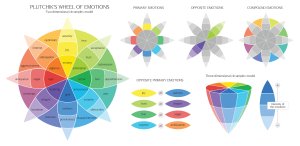Getting Started With Integrating SEL Into Lessons
The pandemic and many recent events have been tough for students, and promoting social and emotional learning skills can help them process their reactions.
Your content has been saved!
Go to My Saved Content.Recent events—the onset of the pandemic in March, and then the heightened tensions around the country since the killing of George Floyd—have been pushing many educators to make pedagogical shifts and cover topics they typically wouldn’t with students.
The traumas and anxiety associated with the pandemic, as well as the issues associated with race and inequities in education, have caused many of our young people to experience a wide range of unhappy emotions, such as grief, terror, and anger. Individual teachers cannot solve these issues, but they can effectively respond to students’ needs by focusing on equity and integrating social and emotional learning (SEL) into lessons.
While some teachers are fortunate to work in districts where training in SEL and connected topics like trauma-informed and culturally responsive teaching is available, many educators have to figure out how to integrate these critical concepts and skills into daily lessons on their own.
Here are ideas to consider to prepare for holding space for difficult emotions and conversations around sensitive topics, like race, that students may seek to address, as well as strategies for integrating SEL skills into upcoming lessons.
Focus on Equity in Tandem With SEL
Promoting SEL can accompany a focus on equity. This requires teachers to know the students and their needs, and to have resources for use in the classroom. CASEL’s integrated framework is useful in helping students comprehend their emotional responses, which strengthens their emotional intelligence skills by focusing on self-awareness and social awareness, in tandem with intrapersonal, interpersonal, and cognitive competence.
We do need to understand that we can do more harm than good if we don’t have the right language and background knowledge on some of the topics affecting our students. Really focusing on equity requires us to become more socially and culturally competent and know the systemic conditions that led to the disadvantages and associated traumas facing those students who are furthest from opportunity. We need to be deeply informed about the effects of structural racism and the traumatic stress it causes them. In a recent guide to antiracism for teachers for Edutopia, Hedreich Nichols curated a plethora of resources. Other useful educator guides with resources for evidence-based approaches for culturally responsive teaching, trauma-informed teaching, and restorative justice can help us level up our SEL plan.
After diving into these resources, we can begin to create our own plan. I like to keep this simple, using a graphic organizer to help me categorize and list the strategies—and their purposes—that I want to focus on and include in future lessons. This serves as a quick reference and guide for my future learning and planning.
For example, I know that there are times I need to restore justice in my classroom and facilitate restorative practices effectively. This might be because one of my students feels wronged either by me or a peer. And there are also times when my classroom culture feels off, and due to either internal or external factors like current events, we need to regain our synergy. I keep strategies for situations like these on a simple T chart as a reminder.
Integrate Emotion Check-ins Into Daily Lessons
Naming emotions is a critical first step needed for students to become self-aware and begin to manage their own emotional states effectively—psychologists call this labeling. They need to learn how to label their emotions and then identify and implement appropriate SEL strategies to get themselves back in a peaceful state. I like to use emotion check-ins daily for this purpose and tie them to either impactful current events, happenings in my classroom, or the concepts and student work in the day’s lesson.
You can begin early in the school year by providing your kids with vocabulary words appropriate to their grade level. I like to use Plutchik’s Wheel of Emotions because it simplifies emotions for students and helps us focus on eight basic ones (anger, anticipation, joy, trust, fear, surprise, sadness, and disgust). I find that this helps them categorize their emotions and their responses to those emotions. Additionally, students can recognize that other emotions are an amalgamation of the eight basic emotions or are derived from one or more of them. This is a very powerful realization for them—it serves to help them identify emotional triggers and begin planning to respond with good self-management strategies.

I then utilize a very simple to follow “emotions planner” as part of a daily check-in with students to label their emotions in response to a new concept we are covering or product they need to create. We settle on SEL strategies that either they or I need to use to help them regulate the emotion effectively.
A Last Word
As teachers, we’re often on the front lines for dealing with some of the most challenging emotions that burden students. Most of us have seen that when those emotions aren’t dealt with appropriately, healing doesn’t take place, with adverse effects that can show up throughout our society.
Our students need tangible steps for labeling emotions (particularly the negative ones) and strategies for being present with them while taking appropriate actions. Developing a classroom that helps them develop these skills demands us to do the work alongside them with empathy, new learning, and considerable planning. The result will be students possessing the emotional intelligence skills required for self-awareness, social awareness, and better self-management, relationship building, and decision making.
